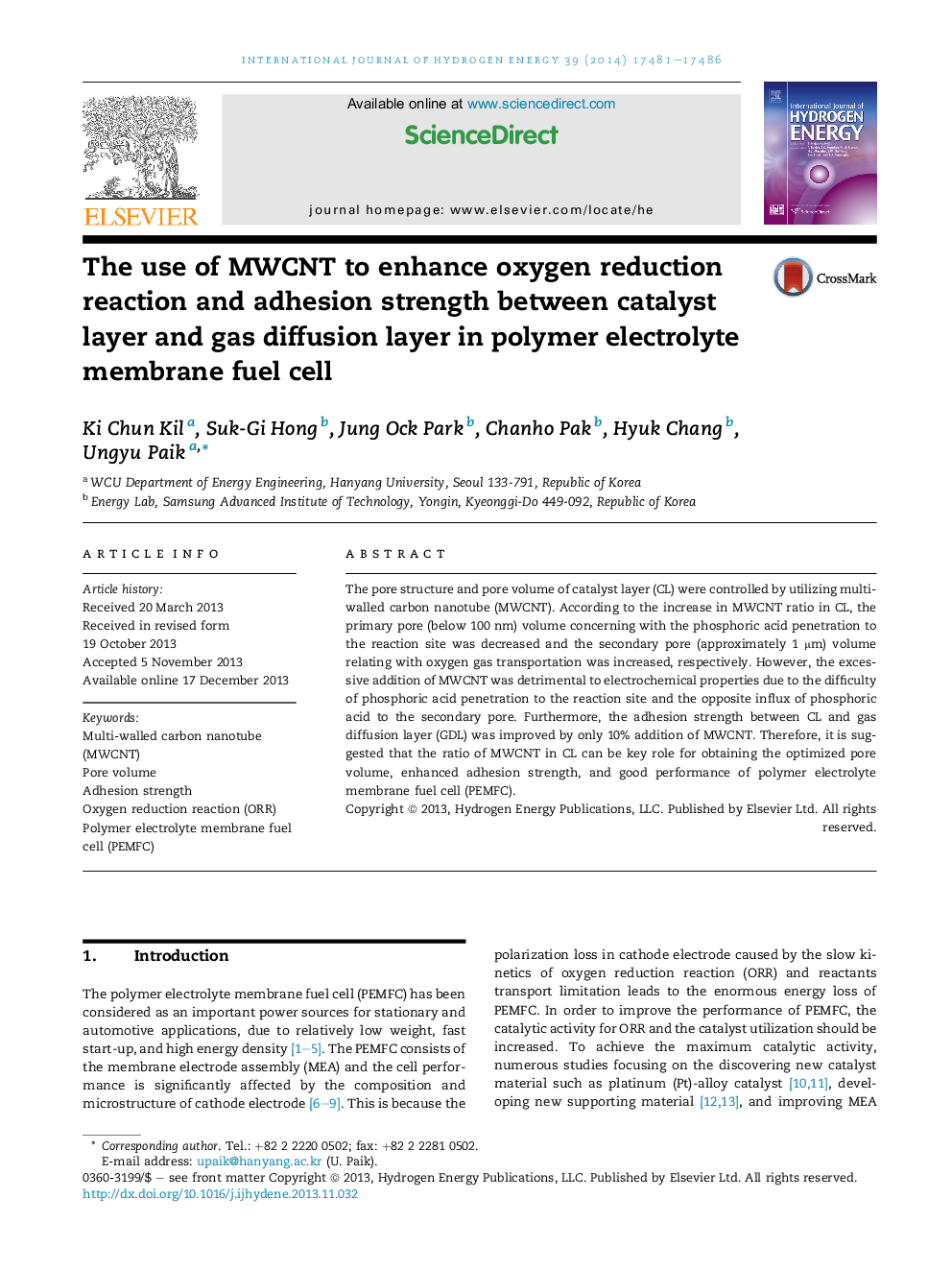| Article ID | Journal | Published Year | Pages | File Type |
|---|---|---|---|---|
| 1272209 | International Journal of Hydrogen Energy | 2014 | 6 Pages |
•Pore volume and pore structure were controlled by utilizing MWCNT.•Adhesion strength of catalyst layer on gas diffusion layer was improved by MWCNT.•The single cell prepared with MWCNT shows better performance than without MWCNT.
The pore structure and pore volume of catalyst layer (CL) were controlled by utilizing multi-walled carbon nanotube (MWCNT). According to the increase in MWCNT ratio in CL, the primary pore (below 100 nm) volume concerning with the phosphoric acid penetration to the reaction site was decreased and the secondary pore (approximately 1 μm) volume relating with oxygen gas transportation was increased, respectively. However, the excessive addition of MWCNT was detrimental to electrochemical properties due to the difficulty of phosphoric acid penetration to the reaction site and the opposite influx of phosphoric acid to the secondary pore. Furthermore, the adhesion strength between CL and gas diffusion layer (GDL) was improved by only 10% addition of MWCNT. Therefore, it is suggested that the ratio of MWCNT in CL can be key role for obtaining the optimized pore volume, enhanced adhesion strength, and good performance of polymer electrolyte membrane fuel cell (PEMFC).
